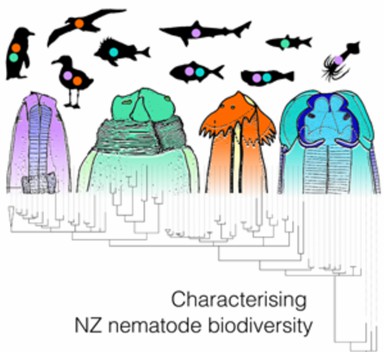Genetic diversity is the core of biodiversity. Genetic diversity refers to the sum of all genetic information contained in the genes of animals, plants, and microorganisms. Every species has its unique gene pool and genetic structure, and there are rich genetic variations among different individuals or groups. These genetic variations constitute the genetic diversity of organisms; therefore, genetic diversity refers to the variation in the structure and composition of nucleotides encoding genetic information in essence, mainly including gene mutation, gene recombination, and chromosome aberration.
Lifeasible provides observation services of endoplasmic reticulum in plants to help our customers worldwide in plant science research. Our platform is equipped with cutting-edge facilities and professional experts to support research. Here, we provide various services according to customers' demands.
 Fig.1 Characterizing of New Zealand's nematode biodiversity. (Bennett J, et al., 2022)
Fig.1 Characterizing of New Zealand's nematode biodiversity. (Bennett J, et al., 2022)
Lifeasible offers services covering mechanism analysis of effector proteins to meet your research demands. With years of experience in plant science, our professional platforms can help our clients solve types of difficulties. If you are interested in our services or have any questions, please feel free to contact us or make an online inquiry.
Reference
Lifeasible has established a one-stop service platform for plants. In addition to obtaining customized solutions for plant genetic engineering, customers can also conduct follow-up analysis and research on plants through our analysis platform. The analytical services we provide include but are not limited to the following:
Get Latest Lifeasible News and Updates Directly to Your Inbox
Adaptive Evolutionary Mechanism of Plants
February 28, 2025
Unraveling Cotton Development: Insights from Multi-Omics Studies
February 27, 2025